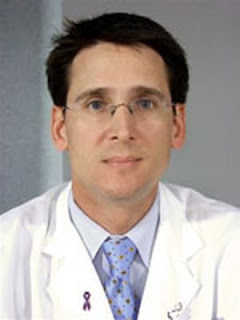Dr. Patricia Bath was the first woman ophthalmologist to be appointed to the faculty of the University of California at Los Angeles School of Medicine Jules Stein Eye Institute.
Dr. Bath was the first woman to chair an ophthalmology residency program in the United States.
Dr. Patricia Bath discovered and invented a new device and technique for cataract surgery known as laserphaco. Dr. Bath is the first African American woman doctor to receive a patent for a medical invention.
Born: November 4, 1942, Birthplace: Harlem, New York - Patricia E. Bath, an ophthalmologist and laser scientist, is an innovative research scientist and advocate for blindness prevention, treatment, and cure. Her accomplishments include the invention of a new device and technique for cataract surgery known as laserphaco, the creation of a new discipline known as "community ophthalmology," and appointment as the first woman chair of ophthalmology in the United States, at Drew-UCLA in 1983.

Dr. Patricia E. Bath | Patricia Bath's dedication to a life in medicine began in childhood, when she was first heard about Dr. Albert Schweitzer's service to lepers in the Congo. After excelling in her studies in high school and university and earning awards for scientific research as early as age sixteen, Dr. Bath embarked on a career in medicine.
She received her medical degree from Howard University College of Medicine in Washington, D.C., interned at Harlem Hospital from 1968 to 1969, and completed a fellowship in ophthalmology at Columbia University from 1969 to 1970. Following her internship, Dr. Bath completed her training at New York University between 1970 and 1973, where she was the first African American resident in ophthalmology. Bath married and had a daughter Eraka, born 1972. |
While motherhood became her priority, she also managed to complete a fellowship in corneal transplantation and keratoprosthesis (replacing the human cornea with an artificial one).
As a young intern shuttling between Harlem Hospital and Columbia University, Bath was quick to observe that at the eye clinic in Harlem half the patients were blind or visually impaired. At the eye clinic at Columbia, by contrast, there were very few obviously blind patients. This observation led her to conduct a retrospective epidemiological study, which documented that blindness among blacks was double that among whites. She reached the conclusion that the high prevalence of blindness among blacks was due to lack of access of ophthalmic care. As a result, she proposed a new discipline, known as community ophthalmology, which is now operative worldwide. Community ophthalmology combines aspects of public health, community medicine, and clinical ophthalmology to offer primary care to underserved populations. Volunteers trained as eye workers visit senior centers and daycare programs to test vision and screen for cataracts, glaucoma, and other threatening eye conditions. This outreach has saved the sight of thousands whose problems would otherwise have gone undiagnosed and untreated. By identifying children who need eyeglasses, the volunteers give these children a better chance for success in school.
Bath was also instrumental in bringing ophthalmic surgical services to Harlem Hospital's Eye Clinic, which did not perform eye surgery in 1968. She persuaded her professors at Columbia to operate on blind patients for free, and she volunteered as an assistant surgeon. The first major eye operation at Harlem Hospital was performed in 1970 as a result of her efforts.
In 1974 Bath joined the faculty of UCLA and Charles R. Drew University as an assistant professor of surgery (Drew) and ophthalmology (UCLA). The following year she became the first woman faculty member in the Department of Ophthalmology at UCLA's Jules Stein Eye Institute. As she notes, when she became the first woman faculty in the department, she was offered an office "in the basement next to the lab animals." She refused the spot. "I didn't say it was racist or sexist. I said it was inappropriate and succeeded in getting acceptable office space. I decided I was just going to do my work." By 1983 she was chair of the ophthalmology residency training program at Drew-UCLA, the first woman in the USA to hold such a position.
Despite university policies extolling equality and condemning discrimination, Professor Bath experienced numerous instances of sexism and racism throughout her tenure at both UCLA and Drew. Determined that her research not be obstructed by the "glass ceilings," she took her research abroad to Europe. Free at last from the toxic constraints of sexism and racism her research was accepted on its merits at the Laser Medical Center of Berlin, West Germany, the Rothschild Eye Institute of Paris, France, and the Loughborough Institute of Technology, England. At those institutions she achieved her "personal best" in research and laser science, the fruits of which are evidenced by her laser patents on eye surgery.
Bath's work and interests, however, have always gone beyond the confines of a university. In 1977, she and three other colleagues founded the American Institute for the Prevention of Blindness, an organization whose mission is to protect, preserve, and restore the gift of sight. The AIPB is based on the principle that eyesight is a basic human right and that primary eye care must be made available to all people, everywhere, regardless of their economic status. Much of the work of the AIPB is done though ophthalmic assistants, who are trained in programs at major universities. The institute supports global initiatives to provide newborn infants with protective anti-infection eye drops, to ensure that children who are malnourished receive vitamin A supplements essential for vision, and to vaccinate children against diseases (such as measles) that can lead to blindness.
As director of AIPB, Bath has traveled widely. On these travels she has performed surgery, taught new medical techniques, donated equipment, lectured, met with colleagues, and witnessed the disparity in health services available in industrial and developing countries.
Dr. Bath is also a laser scientist and inventor. Her interest, experience, and research on cataracts lead to her invention of a new device and method to remove cataracts—the laserphaco probe. When she first conceived of the device in 1981, her idea was more advanced than the technology available at the time. It took her nearly five years to complete the research and testing needed to make it work and apply for a patent. Today the device is use worldwide. With the keratoprosthesis device, Dr. Bath was able to recover the sight of several individuals who had been blind for over 30 years.
In 1993, Bath retired from UCLA Medical Center and was appointed to the honorary medical staff. Since then, she has been an advocate of telemedicine, the use of electronic communication to provide medical services to remote areas where health care is limited. She has held positions in telemedicine at Howard University and St. George's University in Grenada.
Dr. Bath's greatest passion, however, continues to be fighting blindness. Her "personal best moment" occurred on a humanitarian mission to North Africa, when she restored the sight of a woman who had been blind for thirty years by implanting a keratoprosthesis. "The ability to restore sight is the ultimate reward," she says.
What was my biggest obstacle?
Sexism, racism, and relative poverty were the obstacles which I faced as a young girl growing up in Harlem. There were no women physicians I knew of and surgery was a male-dominated profession; no high schools existed in Harlem, a predominantly black community; additionally, blacks were excluded from numerous medical schools and medical societies; and, my family did not possess the funds to send me to medical school. [Dr. Bath says her mother scrubbed floors so she could go to medical school.]
Despite official university policies extolling equality and condemning discrimination, Bath experienced both sexism and racism during her tenure at both UCLA and Drew. Determined that her research not be obstructed by the "glass ceilings," she took her research abroad to Europe, where her research was accepted on its merits at the Laser Medical Center of Berlin, West Germany, the Rothschild Eye Institute of Paris, France, and the Loughborough (England) Institute of Technology. At those institutions she excelled in research and laser science, the fruits of which are evidenced by her patents for laser eye surgery.
How do I make a difference?
I am most proud of my invention of a new technique and concept for cataract surgery, known as laserphaco, which is defined by my publications as well as patents.
Who was my mentor?
Newspaper accounts of the humanitarian work of Dr. Albert Schweitzer (who treated lepers in Africa) and my personal relationship with my family physician, Dr. Cecil Marquez, inspired me with the ambition to become a physician. Both my parents shared my admiration for these two role models and encouraged me to pursue my ambition.
TEXT and IMAGE CREDIT: Government information at NLM Web sites is in the public domain. Public domain information may be freely distributed and copied, but it is requested that in any subsequent use the National Library of Medicine (NLM) be given appropriate acknowledgement.
Changing the Face of Medicine

 ist.psu.edu
ist.psu.edu































